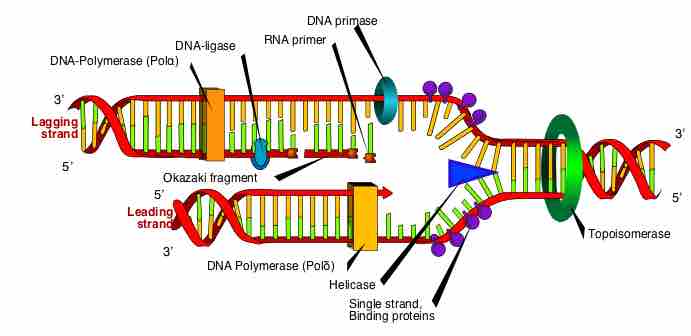DNA Replication in Prokaryotes

DNA Replication in Prokaryotes
A replication fork is formed when helicase separates the DNA strands at the origin of replication. The DNA tends to become more highly coiled ahead of the replication fork. Topoisomerase breaks and reforms DNA's phosphate backbone ahead of the replication fork, thereby relieving the pressure that results from this supercoiling. Single-strand binding proteins bind to the single-stranded DNA to prevent the helix from re-forming. Primase synthesizes an RNA primer. DNA polymerase III uses this primer to synthesize the daughter DNA strand. On the leading strand, DNA is synthesized continuously, whereas on the lagging strand, DNA is synthesized in short stretches called Okazaki fragments. DNA polymerase I replaces the RNA primer with DNA. DNA ligase seals the gaps between the Okazaki fragments, joining the fragments into a single DNA molecule.
Source
Boundless vets and curates high-quality, openly licensed content from around the Internet. This particular resource used the following sources: